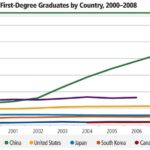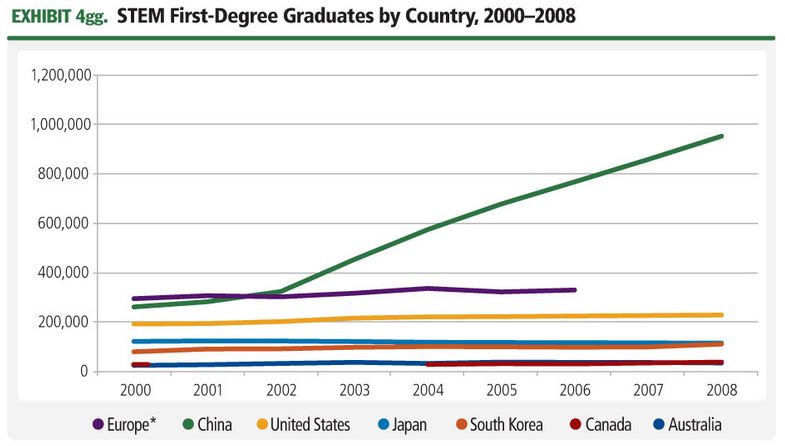Education
Top-level trends
Top-level trends
The continued health of the space workforce depends on a steady stream of individuals with the education necessary to pursue these jobs. For most space occupations, this means a degree in a science, technology, engineering, and mathematics (STEM) field. In order to pursue these degree programs successfully, students must have adequate training and engagement during their primary and secondary education years.
2014 – Top-level Trends
In education, the most recent National Assessment of Educational Progress exams show that U.S. fourth- and eighth-grade students are showing improvement in mathematics, though less than half achieve at or above the level deemed proficient. According to the most recent international examinations, the United States remains in the middle of the pack among major space nations with regard to mathematics performance, with Japan and South Korea leading
2013 – Top-level Trends
Highly skilled individuals are needed to maintain the global space workforce. In most cases, these individuals will need to obtain a university degree, often in a science, technology, engineering, or mathematics (STEM) field. The number of graduates in these fields provides an indication of whether the supply of graduates will be adequate to meet industry needs.
2012 – Top-level Trends


Science and engineering education provides the advanced skills required for a competitive space workforce. It also cultivates the expertise needed for research and innovation. Understanding trends in the production of highly skilled scientists and engineers can provide an indication of long-term prospects for the space workforce.
2011 – Top-level Trends – Snapshot
In 2010, the global space workforce continued to weather the effects of the global financial crisis, recession, and ongoing economic uncertainty with relative resiliency. Declines in American space employment caused hardship but were relatively small compared to the overall global space workforce.
2009 – Top-level Trends – Snapshot
As nations around the world increase investment in both space activity and space human capital infrastructure, traditional models of space education and workforce development are increasingly being supplemented by newer approaches. These approaches emphasize the potential for international space education cooperation and focus on engaging student interest in space at an early age.
2008 – Top-level Trends
“Many young people today with a technical bent are more entranced with the Internet or biotechnology than space exploration. Space travel, after all, was a fascination of their parents’ generation,” noted a February 2003 Wall Street Journal article on recruiting challenges confronting NASA.